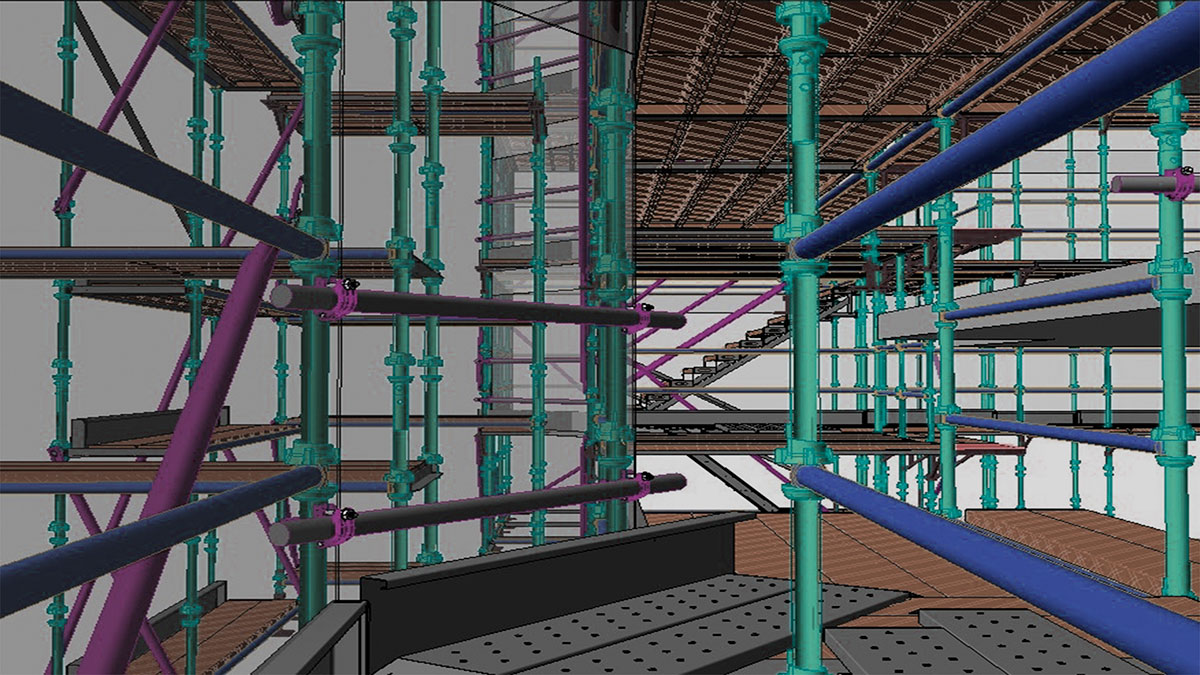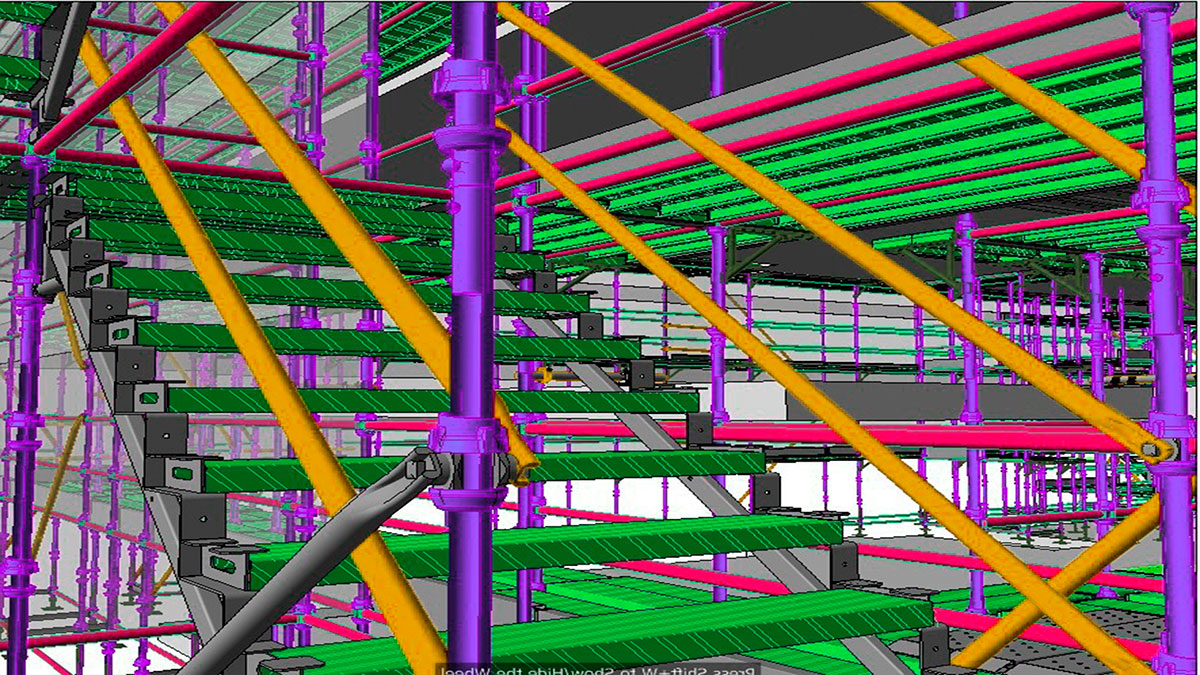Although it does not receive much attention, BIM (Building Information Modelling) methodology is also applied in scaffolding design. However, the use of this methodology in the scaffolding process offers numerous benefits in terms of accuracy, efficiency and safety. Let’s take a look at these:
Detailed and accurate scaffolding planning
Indeed, the BIM system allows the creation of detailed three-dimensional models of the scaffolding, integrated with those of the main project. This coordination with the building design ensures that the scaffolding fits perfectly into the building structure, therefore avoiding conflicts and optimising the use of space.


Scaffolding visualisation in advance of construction
With BIM, we visualise the scaffolding at the construction site prior to its physical installation, which makes it easier to make prior adjustments.
Improved scaffolding safety
The system helps to identify risks and, therefore, the necessary adjustments to mitigate them. At the same time, it enables us to create detailed safety plans, including scaffolding access routes, anchor points and marking of risk areas.
Efficiency in scaffolding design and erection
The BIM methodology allows the exact calculation of the required materials, which serves to optimise resources, reduce waste and therefore keep costs and time under control and within budget.


Planning of scaffolding erection phases
The precise scheduling of scaffolding erection and dismantling phases that BIM methodology makes available to us, minimises the impact on other project activities.
Documentation and regulations with regard to scaffolding in construction
Firstly, by integrating regulatory requirements into the model, BIM methodology serves to ensure that the scaffolding design complies with all applicable regulations and safety standards; secondly, it facilitates the automatic production and maintenance of the necessary documentation, such as drawings, bills of materials and assembly manuals.
By David González Molina, BIM manager in the Architecture Department of Amusement Logic






